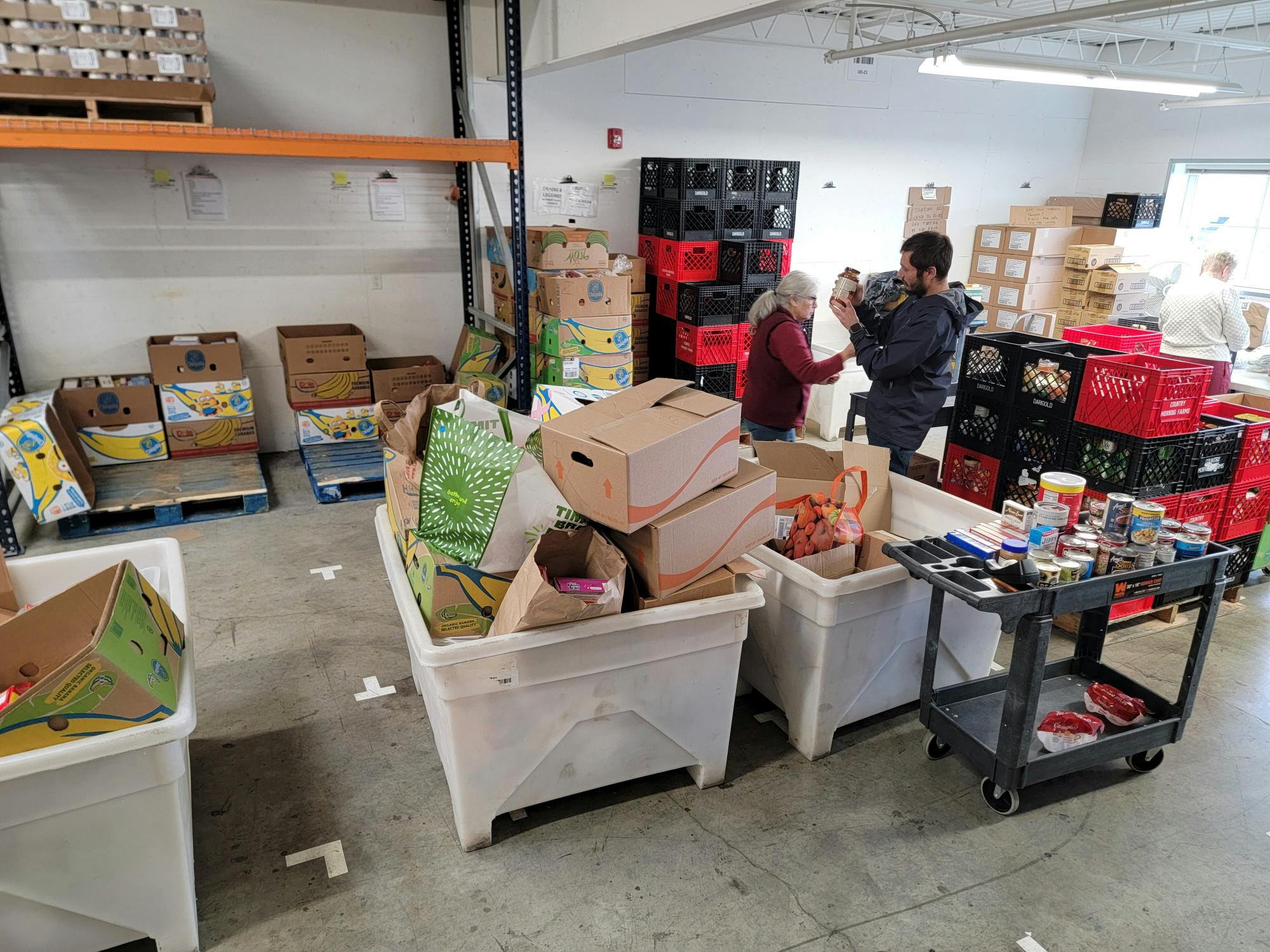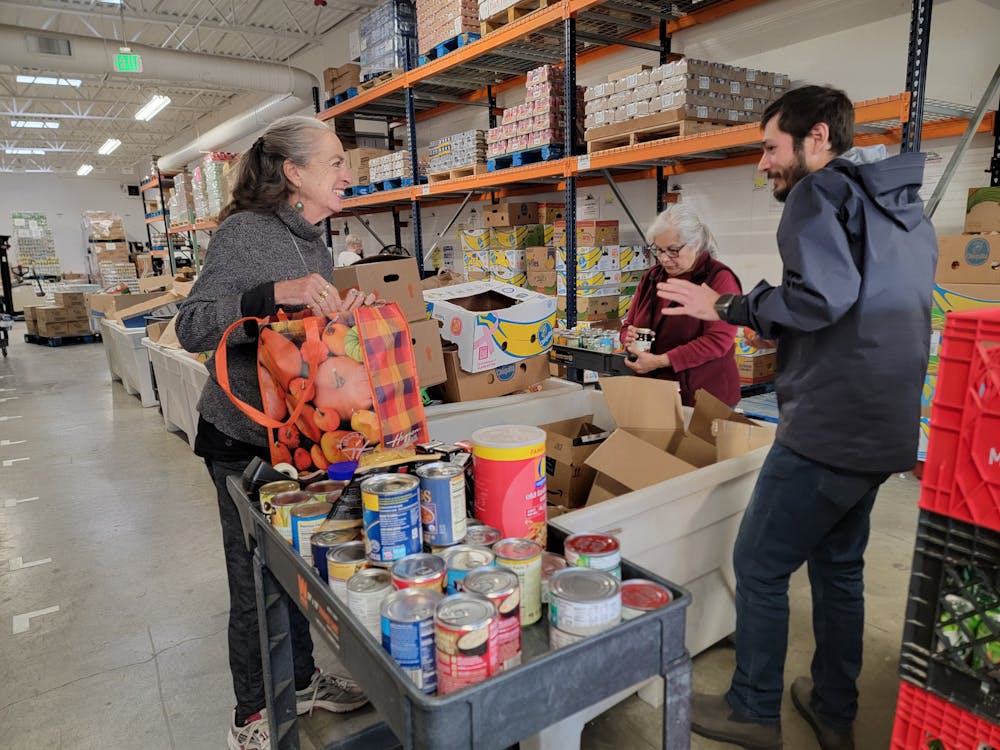Organizations trying to meet increasing food insecurity are asking for government funding in Whatcom County.
The Bellingham Food Bank, the most high-traffic food bank in Washington state, is working with the Bellingham City Council to provide $1 million in funding, while the Whatcom County Food Bank Network asks for $2 million from Washington state.
“This money will help us to source food for a quarter of the county’s population. Buying food is now necessary given the rapid increase of demand for food bank services in Whatcom County as well as the significant decrease of available redistributed food,” Stephanie Sisson, Bellingham Food Bank’s Communications and Outreach Coordinator, said in an email.
According to the 2023 census data, a quarter of Whatcom County’s population is approximately 58,000 people.
Mayor Kim Lund proposed $250,000 for the food bank in Bellingham’s preliminary 2025 budget, under the Planning and Community Development Department and General Fund. Sisson said that the monetary allocation is a quarter of what is needed. The food bank offers free grocery programs to approximately 5,000 households weekly, an increase of 194% since 2022.
According to Sisson, $250,000 would last the bank a month and serve an estimated 20,000 households.
Other counties, such as King County, have neighborhood food banks, while food banks in Whatcom County support whole cities of people who need those services, Sisson said.
Rhys-Thorvald Hansen, co-director of Whatcom Food Network and representative of the Whatcom Food Systems Committee, said the concentration of resources in city centers is an equity issue.
“When you’re trying to meet the needs of the largest amount of people that you can, you’re going to focus on concentrated population areas,” Hansen said.
While this strategy supports densely populated areas, those in more rural communities or folks just outside the city struggle to access basic resources according to Hansen.
Whatcom Food Network is a community-based organization that connects different branches of Whatcom County’s food system. Through building partnerships at local, regional and national scales, the organization works toward strengthening food access across all areas of the county. Whatcom Food Network is a separate organization from Whatcom County Food Bank Network, which is the alliance of all the food banks in the county.

Alexander McIntyre and Elizabeth Hemmerly scan food labels for expiration dates, confirming the food is viable for donation on Oct. 29, 2024, in Bellingham, Wash. On Tuesdays, volunteers gather at Bellingham Food Bank to pack boxes sent out for the home delivery program. // Photo by Larson McDonagh
Trish Twomey, executive director of the Washington Food Coalition, said food system stability requires support from a variety of stakeholders.
“There's our tried and true community donations and schools and churches,” Twomey said. “But … those are small quantities of donations, and to have something stable and ongoing is really what the food programs need.”
Most support for the Whatcom County Food Bank Network comes from organization, individual, business, foundation and grant donations totaling approximately $4.8 million annually, Sisson said.
Alexander McIntyre, a volunteer at the Bellingham Food Bank, has seen how the food bank uses its resources to address food justice. He said it’s important to address the systematic discrepancies that create food insecurity in the first place.
“I’ve noticed the food banks made it a priority to address racism within the food system as well,” McIntyre said. “It’s more than just food insecurity. What are the root causes [of] why people are struggling or why hunger exists? I think we’re not talking about that.”
Volunteer Cynthia Zaferatos said food justice means people should be allowed to choose what’s on their plates, which is why the food bank needs more fiscal support rather than reliance on donations.
“[The food bank is] trying to become more open and receptive to the various community factions that we have in terms of ethnicities and food choices, and trying to expand what is available culturally,” Zaferatos said.
Hansen said collaboration between organizations would ease pressure on emergency food providers like food banks. Whatcom Food Network is working toward policy that can build community solutions and food sovereignty in the 10-year Food System Plan.
“The advantage of being involved in all those different sectors is that they’re all picking up on different impacts of different policy decisions,” Hansen said. “We’re trying to gather that data back [to] send it to County Council so they can make informed decisions.”
As the connections between different food organizations and resources grow in number and strength, the bank still needs substantial financial support to continue providing healthy food for all, as stated in the fourth goal of the Food System Plan.
Sisson hopes more government funding will provide access to desirable, high-quality food and strengthen collaboration within the Whatcom County Food Bank Network.
Anyone interested in finding emergency support needs by location can find more information here.
Larson McDonagh (they/them) is a City News reporter for The Front this quarter. They are majoring in Environmental Journalism. They are the current President of Western’s Advanced Treble Chorale for which they’ve been involved for the past three years. Outside of school, they enjoy reading good books and cooking delicious meals. You can reach them at larsmcdonagh.thefront@gmail.com.






